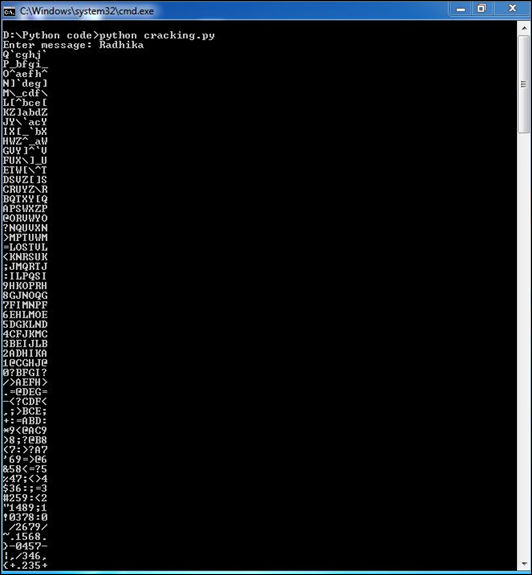Python Forensics – Cracking an Encrypted Program
Python Forensics – Cracking an Encrypted Program
In this chapter, we’ll learn how to crack text data obtained during analysis and forensics.
Plain text in cryptography is normal, readable text, such as a message. On the other hand, a cipher text is the output of an encryption algorithm after you input plain text.
A simple example of how we can convert plain text messages into cipher text is the Caesar cipher, invented by Julius Caesar to keep plain text secret from his enemies. This cipher involves shifting each letter in the message “forward” three places in the alphabet.
Below is a demonstration.
a → D
b → E
c → F
….
w → Z
x → A
y → B
z → C
Example
When you run the Python script, the input gives you all the character possibilities, which are used for pattern evidence.
The types of pattern evidence used are as follows
- Tire Tracks and Marks
- Impressions
- Fingerprints
Each biometric data set consists of vector data, which we need to decipher to gather comprehensive evidence.
The following Python code shows how you can produce a cipher text from plain text −
import sys
def decrypt(k,cipher):
plaintext = ''
for each in cipher:
p = (ord(each)-k) % 126
if p < 32:
p+=95
plaintext += chr(p)
print plaintext
def main(argv):
if (len(sys.argv) != 1): sys.exit('Usage: cracking.py')
cipher = raw_input('Enter message: ')
for i in range(1,95,1):
decrypt(i,cipher)
if __name__ == "__main__":
main(sys.argv[1:])
Output
Now, let’s check the output of this code. When we input a simple text “Radhika”, the program will produce the following cipher text.
